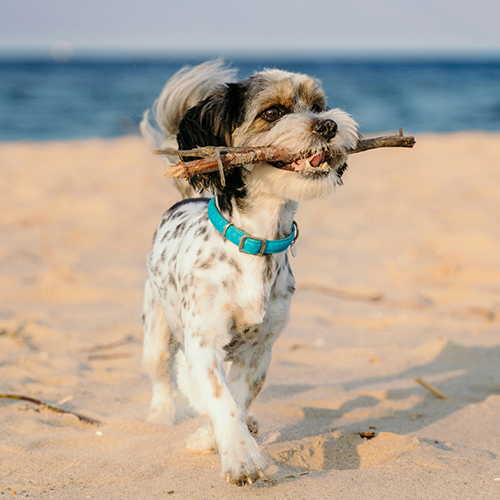
Summer is a fun season because it’s the perfect time to get out and enjoy activities with our pets. It’s the perfect time for outdoor activities and adventures with our furry friends.
But with the warmer temperatures and exposure to the sun, we must take extra care so they aren’t overheating or becoming dehydrated.
Dogs are known to cool down differently than people do – dogs pant to keep cool and sweat through their paws, cats clean and lick themselves as a method to cool down with their saliva.
Monitor for Signs of Heat Stress
It’s very important to keep an eye out for signs of heat exhaustion, such as excessive panting, drooling, lethargy, or vomiting. If you suspect your pet is overheating, move them to a cooler area, offer water, and contact your veterinarian. Be aware also that Flat Faced dogs and cats, like pugs, bulldogs or Persians and even rabbits are more susceptible to heat stroke, as they have more difficulties in cooling down.
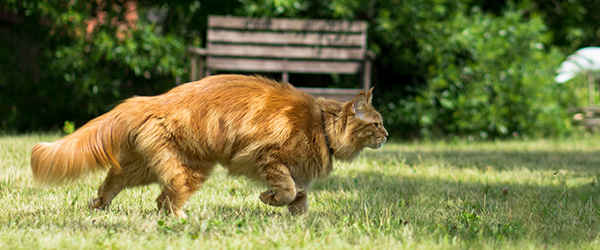
We have some tips to help you be mindful of your pets’ needs, to make sure they stay safe and healthy during the summer months.
- Provide enough water: fresh drinking water should always be available. Water can also be provided by way of ice cubes, be creative and make an ice-pop for your dog or cat as a fun treat or toy.
- Provide access to cool places, shade and shelter. There are special cooling mats for pets, but simple cooling tricks such as popping a plastic water bottle in the freezer for them can also help.
- It might seem like a good idea to be outside in the fresh air, but in the hottest moments of the day, beaches or open parks are not always a good idea as there is no shade.
- Avoid intensive exercise during the day. Dogs suffer faster from heat than people, so schedule exercises in the early morning or late evening. Dogs often do not know their own limits and will keep on playing fetch with a ball until they overheat.
- Brush your dog or cat regularly, but do not shave them! Their fur is a protection against the cold but also against the heat, as it works as an isolating layer.
- Short-haired breeds can get sunburned, so use a pet-safe sunscreen. Not sure if your pet needs sunscreen? Ask your vet! Be extra careful if your cat has white ear tips as there is a link between sunburn and malignant tumours in cats. In these cats the use of sunscreen is a must.
- Pay extra attention to their paws! A hot pavement can burn your pet’s paws, so it’s always better walk on the grass or in the shade.
- Pay extra attention to hygiene. Warm weather makes Bacteria and Algae grow rapidly. So be careful with water in puddles or ponds. And don’t leave open pet food packs outside the refrigerator for too long. Always remember to thoroughly clean their food and water bowls daily..
- In summer we also see more parasites like ticks and fleas: ask your veterinarian to advise you on the best protection products for your pets as they are the experts.
- Lastly, but very importantly: NEVER leave pets alone in parked cars, even when you leave the window cracked open! The inside of a car can quickly reach dangerously high temperatures. If you see a pet in a closed vehicle, try to contact the owner of the car or the police to save the pet.
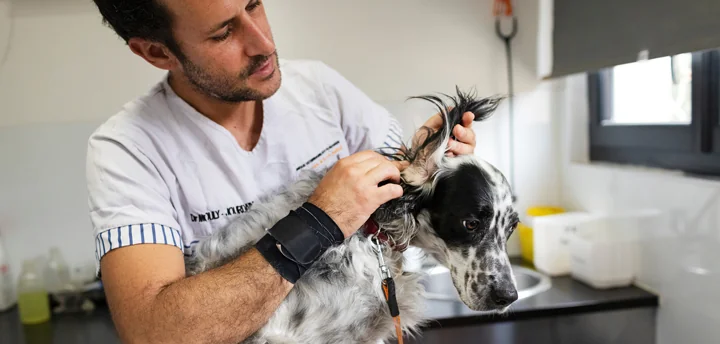
Prevention and early diagnostics
Regular veterinary check-ups are essential for keeping your pet happy and healthy. These visits help prevent diseases and detect any issues in their early stages. Not only does early detection lead to better outcomes for our beloved pets, but it also means less financial costs, reduced stress, and smoother treatment processes for both pets and their owners. Vaccinations, parasite prevention, routine deworming, dental checks and physical exams are important components of preventing diseases. Regular veterinary checks can also lower your animal’s stress when visiting a vet.
The frequency of regular veterinary checks depend on the age of the animal, previous medical history, breed and lifestyle.
• Puppies/kittens: 5 times by the age of six months (Core Vaccination Schedules)
• Adult dogs/cats: at least once a year or more frequent depending on the pet’s age, lifestyle, and health status
• Geriatric dogs/cats: every six months is recommended
Vaccination
For both cats and dogs vaccination is key in preventing life-threatening diseases. Vaccines are separated into core (strongly recommended), non-core (optional) and not recommended vaccines. Core vaccines are considered vaccines that all dogs throughout the world must receive, at recommended intervals.
For dogs, core vaccines typically include protection against:
• Canine distemper virus (CDV)
• Canine adenovirus (CAV; types 1 and 2)
• Canine parvovirus type 2 (CPV-2) and its variants
Core vaccines for cats include:
• Feline panleukopenia (FPV),
• Feline herpesvirus (FHV-1)
• Feline calicivirus (FCV)
Additionally, rabies vaccination is considered a core vaccine for cats and dogs in many regions and is often a necessity if you want to travel with your dog or cat. For more information consult your vet to ensure your animal buddy gets the necessary protection.

Dental Health
Dental disease is a common and concerning health issue for dogs and cats. While it might not always be top of mind, its impact can be significant if left unchecked. Yearly veterinary check-ups are important to prevent dental problems. If you observe bad breath, broken or loose teeth, abnormal chewing, or any other issues, it’s advisable to schedule a veterinary check-up sooner rather than later. See here for more info.
Routine Testing
Depending on your pet’s age and health status, the vet may recommend routine diagnostic tests such as blood work, urinalysis, or faecal testing to screen for underlying health problems. Screening tests delve into aspects of your pet’s health that aren’t easily visible during a physical exam, such as kidney function or blood cell counts, offering a more comprehensive understanding of their well-being.
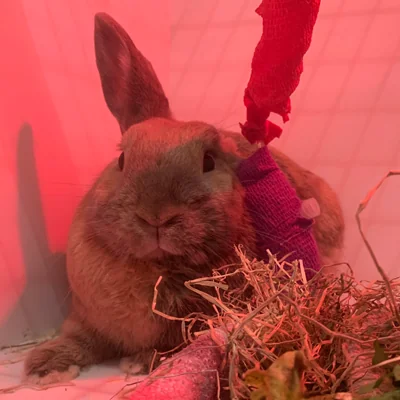
Regular check-ups could save you money
Annual check-ups and preventive care are essential for keeping pets healthy, but also could save you money. Routine examinations can identify concerns before they worsen, potentially sparing you from expensive treatments down the line. More information here.
Less stressful vet visit
Most pets feel anxious during vet visits, and some may even show aggression due to fear. Using treats before and during check-ups can create a positive association with the experience. “Happy visits” at the clinic can put your pet at ease, making vet trips a more positive experience. Don’t hesitate to consult with your vet for more tips on easing your pet’s stress during visits and check out these useful tips.
Afterall, regular vet check-ups are essential for your pet’s health, detecting issues early, save you money in the long run and allow you to spend longer quality time with your companion. So why wait, book your next check-up now!
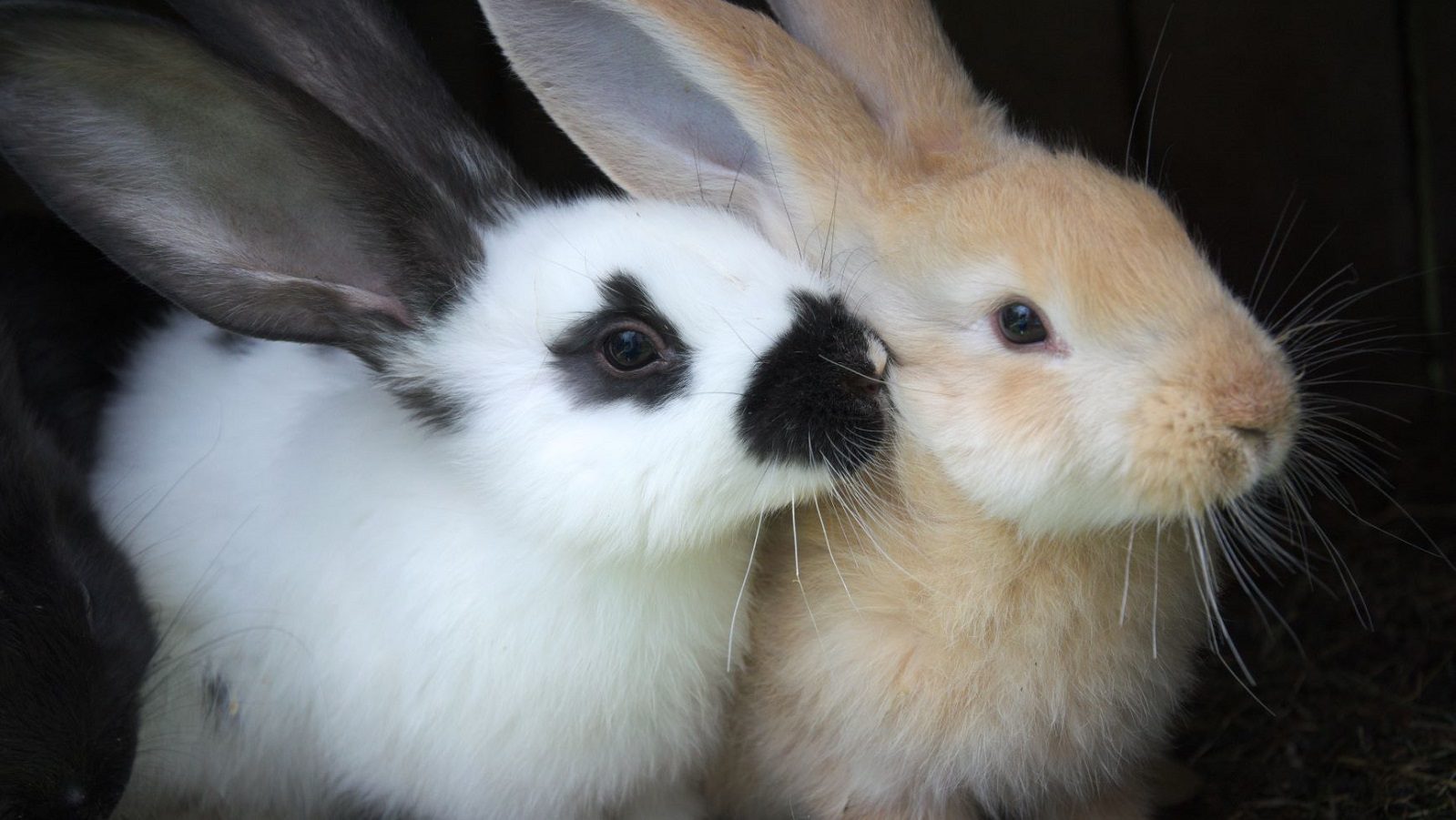
Rabbits are becoming ever more popular pets, but they are also one of the most misunderstood and neglected. Not because people mean to be cruel but because these beautiful little animals have much more complex needs than many people realise.
In general, all animals have five basic welfare needs.
Let’s have a look at these needs for rabbits as we share our tips on how you can make sure your little hoppers are the happiest they can be!
Provide the right food and fresh water
This may sound easy, but sadly, lots of people get it wrong.
Rabbits have teeth that grow continually throughout their lives, and they’ve evolved to eat fibrous, low energy foods like grass and plants. They need to spend a long time eating and chewing to get all the nutrients they need so their teeth get a lot of wear and tear, hence the need for constant growth. When rabbits don’t get enough grass and hay their teeth can overgrow and cause painful mouth lesions and abscesses. Muesli-style food allows for selective feeding and should never be fed.
Your rabbits should have constant access to good quality hay and only have about an eggcup-sized portion of complete rabbit pellets a day. Giving them access to fresh grass and a variety of green, leafy fibrous vegetation, weeds and herbs is even better.
All animals should have constant access to fresh water. Rabbits can be given water in bowls or in drinker bottles. Always check your rabbits’ water several times a day as bowls may get tipped over or soiled and bottles can get blocked.
Ensure the right environment
Way too many rabbits are still kept in small hutches.
Freedom of choice and movement is essential for animal happiness. Rabbits are most active at dusk and dawn, which may not coincide with your schedule. With this in mind they should have safe access to their exercise area at all times. Hutches should be big enough for them all to stretch out fully and also to be able to stand up on their hind legs. The smallest hutch you should ever get should be 1.8m x 0.6m x 0.6m and they will need a lovely exercise area that they can access all the time too.
You can use tunnels and hideouts and add elevated areas for lounging and looking out. The world is your oyster so use your imagination to make their home as interesting as you can.
Allow them to express natural behaviours
Just think – What do rabbits like and need to do? Run, hop, play, explore, graze, lounge around, hide, feel safe and of course, dig!
Just because you are providing your rabbits with luxury accommodation doesn’t mean that they won’t feel the irresistible urge to dig. This may be inconvenient for you but you can give them planters full of soil to dig in or use a sunken pond full of earth to give them some great digging joy without ruining your lawn. Even if your rabbits are kept indoors they still need to dig.
Know their need to be with (or without) other animals
Rabbits are prey animals and they are also social animals.
This means they feel safer as well as happier when they are with other rabbits. Rabbits should never be kept on their own. Together they can groom and snuggle for warmth and have fun. The best combination is a neutered male and neutered female, but other combinations can work.
Protect them from pain, injury and disease
Rabbits, like lots of other animals, need protection from diseases.
Rabbits should be vaccinated against Myxomatosis and Rabbit Viral Haemorrhagic Disease. Talk to your vet about when these vaccines should be given and how often they need to be repeated.
All rabbits should also be neutered. This can help reduce aggression but it also prevents a lot of diseases such as cancer and uterine infections.

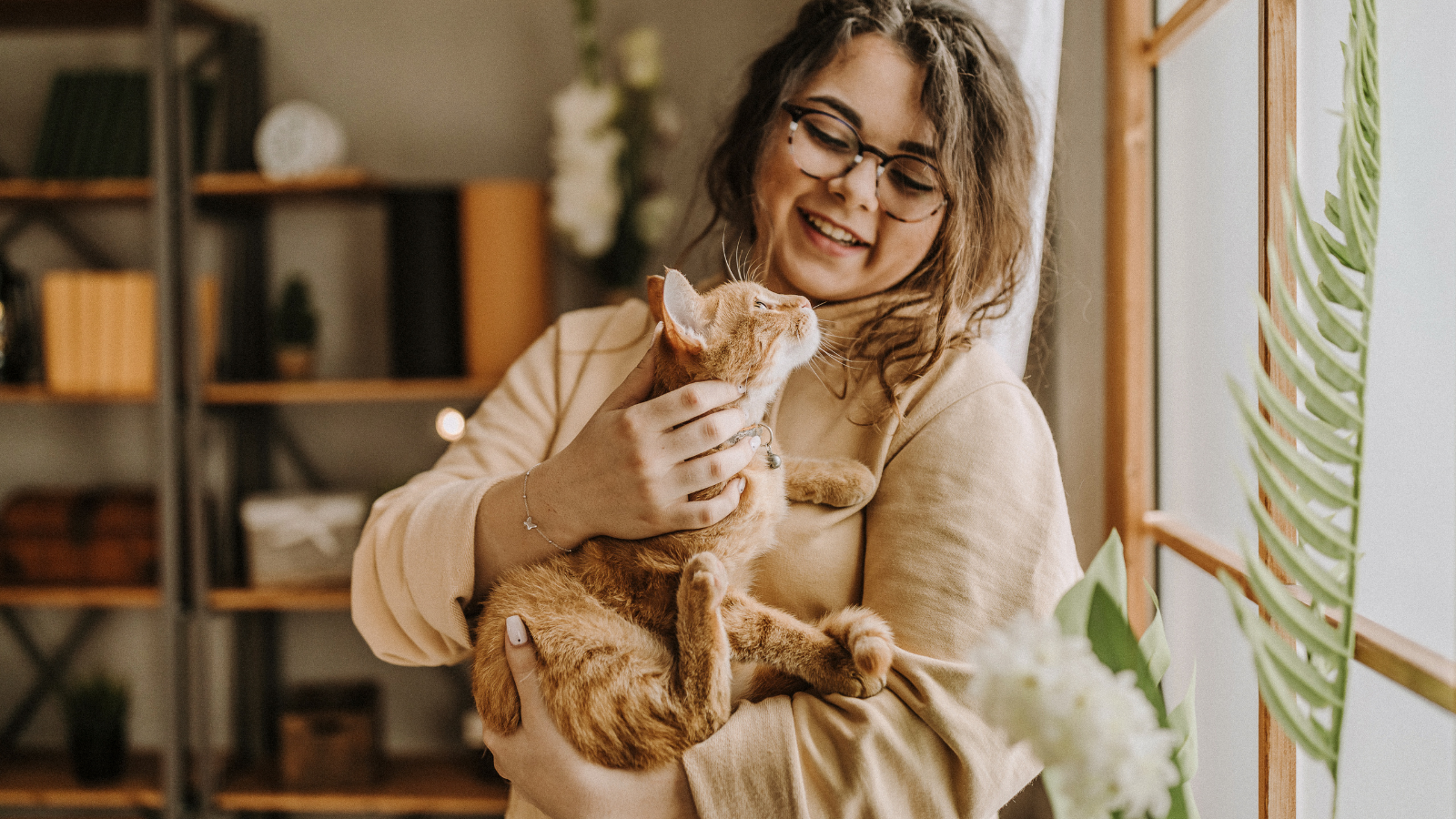
A responsible pet parent ensures that the animal has a good quality of life by understanding and meeting the physical, biological, and emotional needs of their companion. Caring for a pet involves investing in essentials like veterinary care, food, enrichment, exercise and other necessities to ensure their well-being. This all starts before you even bring the pet home. Read more via this link.
STEP 1: Make an informed decision before getting a pet
Before welcoming a dog or cat, or another animal into your home, it’s important to consider your lifestyle, time availability, space, and finances. These factors not only determine if you’re ready for a furry companion but also which breed would be the best fit. If you already have a pet, it’s important to ensure they will get along. To make your decision easier, here are some helpful links: Things to consider before getting a dog and here. We also have a blog on the topic.
STEP 2: Decide whether to adopt or to buy
There are many factors involved when deciding whether to adopt or buy. Shelters are full of animals waiting for a new home. Every animal is unique, with its own special needs, potential health concerns, and unknown past traumas. This can be particularly true for shelter animals. When deciding to adopt make sure it’s from a reputable animal shelter, as animals there are also typically vaccinated, microchipped, and neutered. Learn more about adoption on this link. When deciding to buy a pet from a breeder, be careful to buy from a responsible and reputable breeder, be careful if you buy online and watch out for inherited disorders. Each year, numerous pets are bred under substandard conditions, prematurely separated from their mothers, and traded across Europe. Check also if the breed has any known genetic disorders and hereditary diseases. Ensure that the pet has not been prematurely separated from its mother and has been properly identified and registered (microchipped).
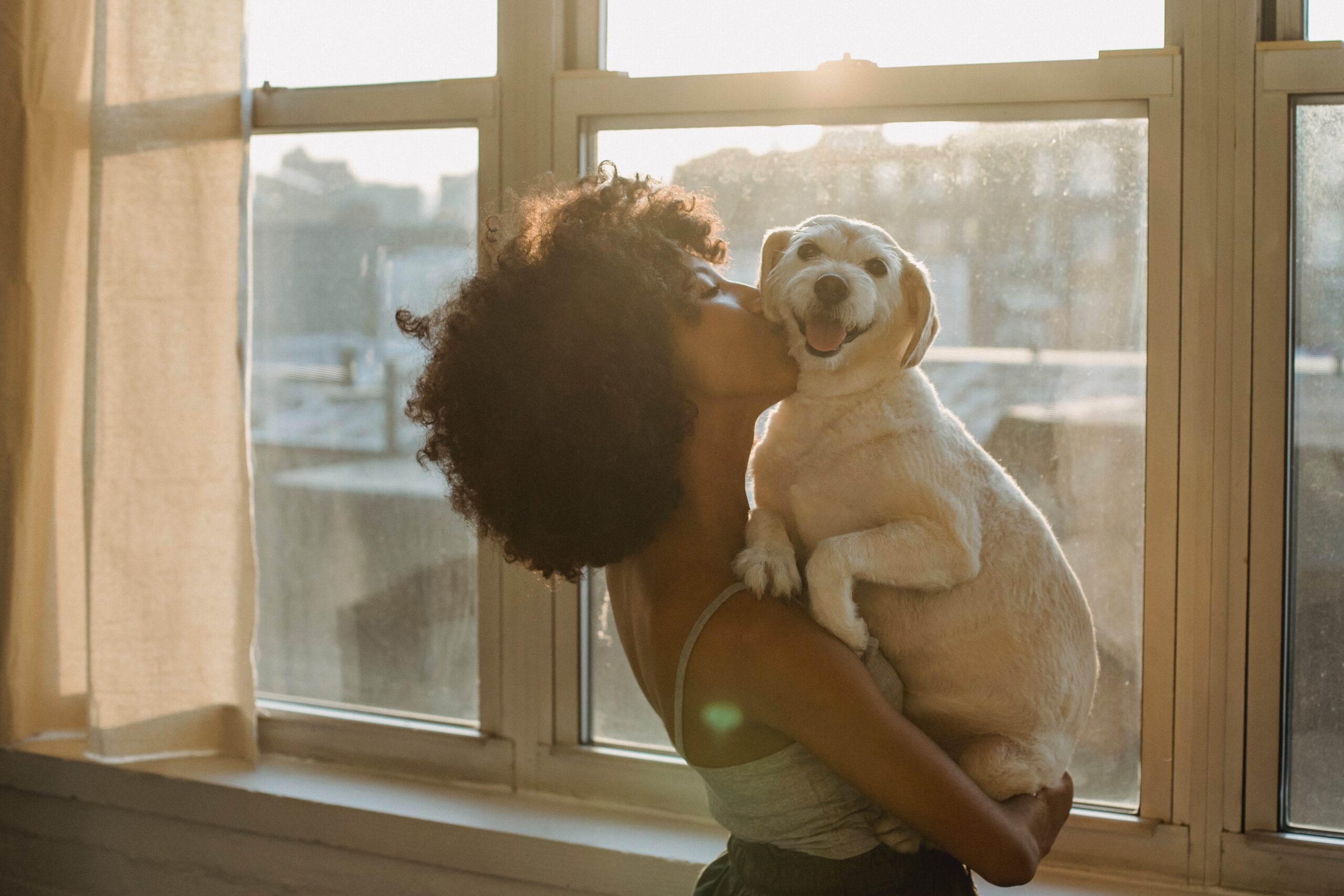
STEP 3: Prepare your home
Dogs
Preparing for the arrival of your new puppy involves gathering essential items to ensure their comfort and well-being. These include feeding and water bowls, a suitable collar or harness, the appropriate leash, a comfortable bed, and a selection of toys. It’s important to provide a variety of toys that offer both physical engagement and cognitive stimulation. Find out what food the puppy was eating before their arrival and continue feeding them the same food initially. While you have the option to change their food later on, it’s advisable to do so gradually. For pet owners with houseplants, learn which ones could be harmful to dogs. Make sure to make your home puppy safe! Find more information on how to prepare for a puppy via this link.
Cats
Before bringing a new kitten home, make sure your home is kitty-proofed. Every kitten needs food and water bowls, food, a litterbox, litter, a tower, toys, and scratching pads. Cats love to climb to higher surfaces, so make sure they are also safe when doing this. Find more information on how to make your home safe via this link.
STEP 4: Living with your pet
Providing food
There is a wide range of pre-prepared pet food to keep dogs and cats happy and healthy. All ‘complete’ pet foods, regardless of format, are carefully formulated to provide all the nutrients a healthy pet needs.
It is important to consider activity level, lifestyle and life stage (e.g. puppy or kitten vs adult), the pet’s preferences with regard to food format and the owner’s opinion regarding convenience, cost, variety and suitability of available pet food. There is no particular right way to feed pets, as long as the nutritional needs of the dog or cat are being met. Always ensure your pet has access to clean water. We suggest you read this factsheet and reference the Nutritional Guidelines. You can also read our blog on the nutritional needs of pets.
Visits to the vet
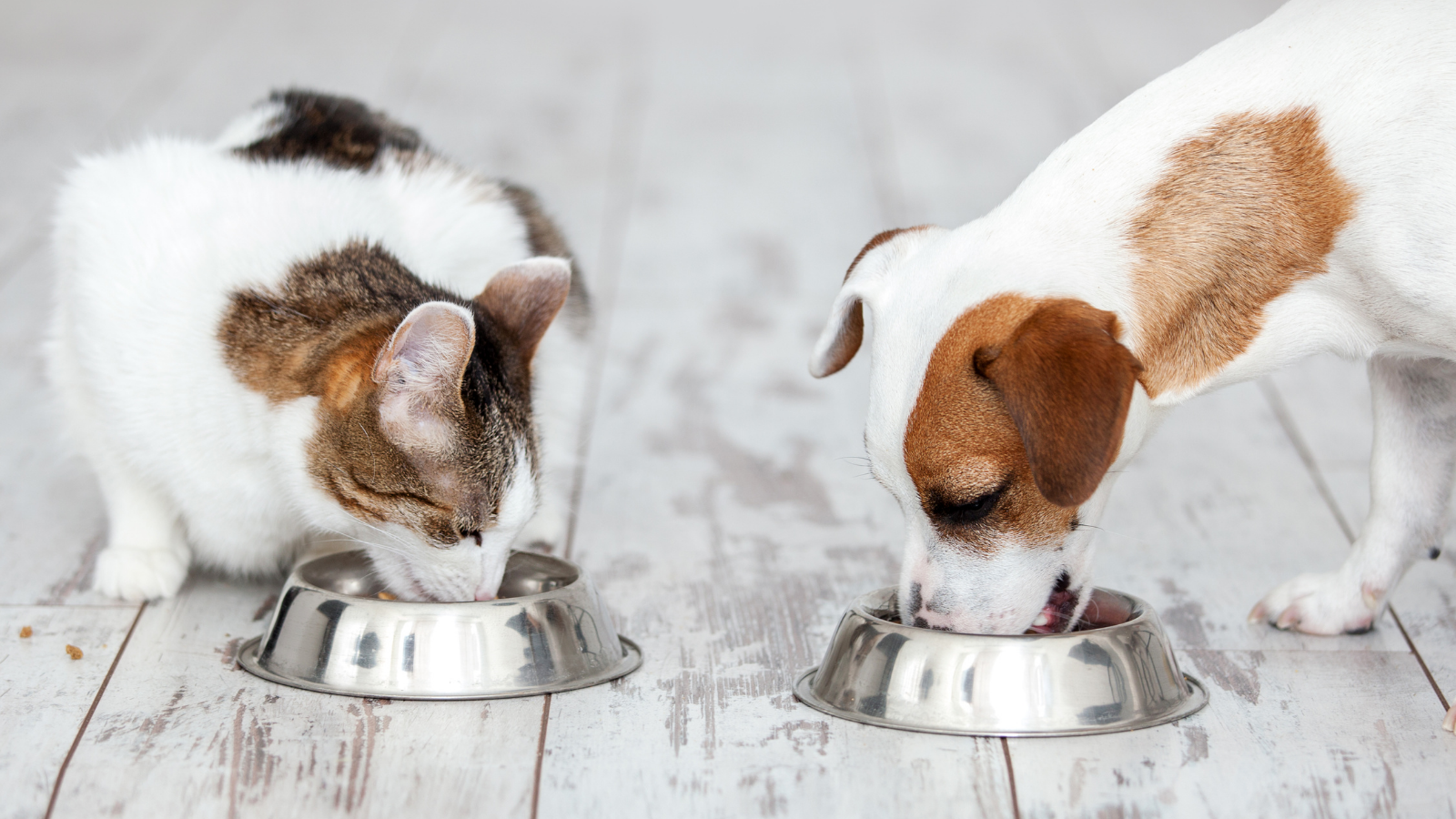
Regular visits to the vet are important for all pets. These visits can be stressful for both you and your pet. Here are some helpful tips to make your cat’s vet visits less stressful:
- Have a good carrier; size appropriate, opens on the top, easy to clean
- Put bedding in the carrier
- Make the carrier a regular part of your cat’s space
- Cover the carrier with a towel during the ride to the vet to keep the cat calm
- Avoid swinging the carrier
- You can spray the carrier with calming synthetic cat pheromones
Find out more via this link.
To make the visit to the vet a little bit less stressful for your dog we recommend bringing a favourite toy or blanket. To ensure your pet’s safety and the comfort of others, it’s essential to have a leash handy in busy waiting rooms. Find more information via this link.
Looking after pets in the winter requires some special attention to ensure their comfort and safety in cold weather. Here are some tips for taking care of your pets during the winter months:

Provide Shelter:
Make sure your pets have a warm, dry shelter to retreat to when it’s cold outside. For dogs and cats this will be a warm spot in your home or a cosy basket. For any smaller indoor pets such as guinea pigs, hamsters and rabbits, they will need extra straw or bedding to keep warm. If your pets live outdoors, make sure their housing is insulated, waterproof, and elevated off the ground. It should provide protection from wind, rain, and snow. Over periods of extremely cold weather, some pets who live outdoors, may need to be brought inside. However, make sure that your pets are protected from open fires or wood burners by using a safety screen to prevent accidents.
Adjust walks and playtime:
All pets’ needs are different but many will need time outdoors limited when temperatures drop. You will need to invest more time playing with your pet indoors, provide new toys and create indoor obstacle courses to ensure they are mentally and physically stimulated.
Dress Your Pet:
If you pet is short-haired or is particularly sensitive to the cold weather, research bespoke coats for dogs (and cats) that will help. Make sure the clothing fits well and doesn’t restrict their movement.
Watch for Frostbite and Hypothermia:
Be aware of the signs of frostbite (pale or discoloured skin) and hypothermia (shivering, lethargy, weakness) in your pets. If you notice these symptoms, consult a veterinarian.
Wipe Paws:
Salt and de-icing chemicals used on sidewalks and roads can be harmful for your pets. After walks, wipe their paws to remove any salt or ice-melting chemicals that can be harmful if ingested. If you purchase any anti freeze products for use in your house, be extra careful as these products are toxic for pets.
Monitor their Weight and Diet:
Some pets may feel the cold and therefore need more calories to stay warm and maintain a healthy body weight. Other pets may have reduced their exercise and therefore need slightly less. Either way, it is important to monitor their weight and size. Always ask your vet for advice if you have any concerns.
Keep Fresh Water Available:
Ensure that your pet has access to fresh water at all times. Check their water bowl frequently to prevent it from freezing.
Keep an Eye on Older Pets:
Older pets may be more sensitive to extreme cold. Pay special attention to their needs and consult with a vet about any age-related concerns.
Maintain a Consistent Routine:
Stick to a regular feeding and exercise routine to help your pet maintain a healthy weight and energy level during the winter. Maintaining your pet’s coat during winter is essential. Regular grooming not only keeps them looking their best but also helps maintain the insulation properties of their fur.
Veterinary Check-Up:
Consider scheduling a winter check-up with your veterinarian. They can assess your pet’s health and discuss any specific winter care recommendations based on their breed and individual needs. Winter pet care involves being attentive to your pet’s specific needs and providing a safe and warm environment. While winter can be a wonderful time for both humans and our pets, extra care is necessary. By following these tips and being vigilant, you can ensure that your furry friends enjoy a cosy, and healthy winter season.
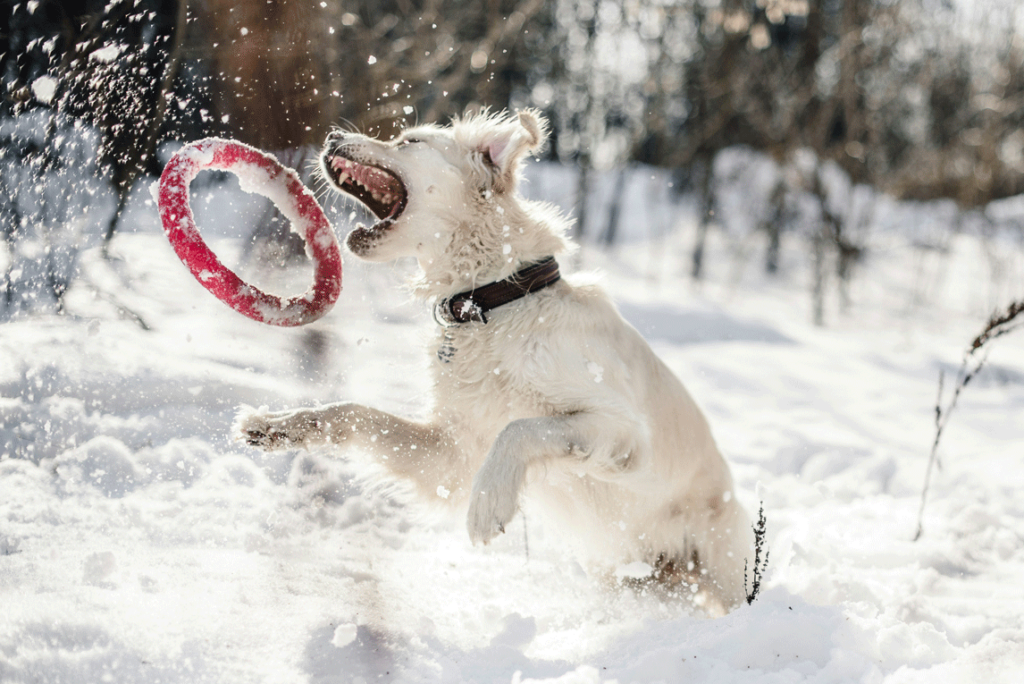
The Festive holiday season is a time to gather with family and friends. However, while we are focused on entertaining relatives and preparing the next celebratory meal, our pets can find their routines disrupted. At this time of year, our homes may also be filled with additional hazards for our pets. Some decorations, plants and indulgent human food, may be toxic for our pets.
To ensure a happy and stress-free holiday season for both your pets and your family, it’s crucial to remain mindful of their wellbeing. Here are our top tips:
Beware Chocolate and Sweets:
Over the festive season, it may be more tempting to give your pet a human food treat. However, foods such as raisins, grapes, onions, garlic and chocolate can be toxic for pets. Even small amounts of chocolate can be extremely dangerous causing vomiting, diarrhoea and sometimes more severe problems.

Avoid Raisins and some nuts:
Grapes and their dried variants, such as currants, sultanas, and raisins, as well as macademia nuts, pose severe health risks to dogs. These ingredients are commonly found in Christmas favourites like fruitcake, pudding, and mince pies. Onions are another potential hazard as they can upset a pet’s stomach.
Keep Alcohol Away:
Pets can be affected by alcohol in much the same way as humans, resulting in symptoms such as wobbliness and drowsiness. In severe cases, it can be highly toxic. Keep pets away from any unattended glasses of alcohol left around during the festive season.
Mind Human Food left overs:
Human food, especially the rich and fatty dishes typically enjoyed during the holidays, can lead to sickness and digestive problems. Additionally, cooked bones can splinter and puncture the digestive tract. If you want to treat your pet, choose specially formulated commercial treats. It is recommended that no more than 10% of a pet’s calorific intake over a week or day come from treats.
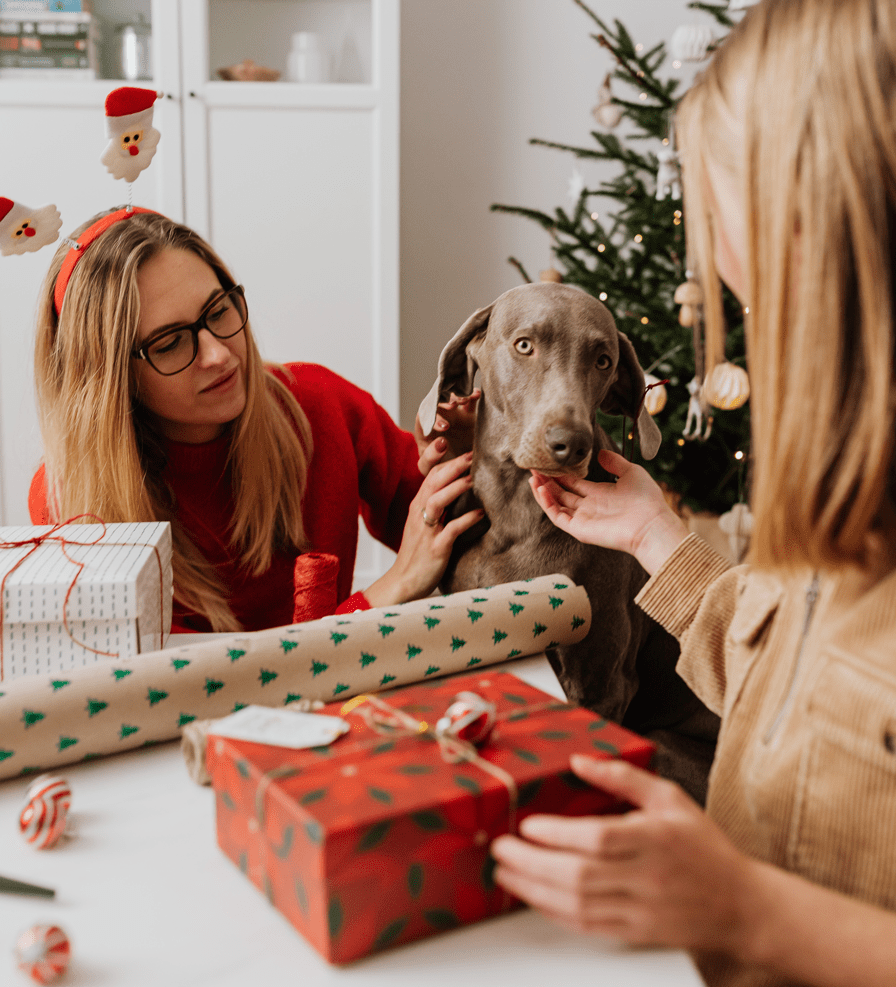
Carefully locate Decorations and Gifts:
Curious pets might see festive decorations like baubles, tinsel, tree lights, wrapping paper, and ribbons as enticing playthings. However, these items can be dangerous if broken and if ingested can lead to blockages in a pet’s digestive system, which may require surgical intervention. Lit candles and open flames can also pose a fire hazard.
Beware Poisonous Plants:
Several common holiday plants, including poinsettias, holly, mistletoe, and ivy, can be toxic to cats and dogs, often causing stomach upset and other health problems. Additionally, be cautious of the sharp needles on Christmas trees.
Protect from Loud Noises and Fireworks:
Fireworks and loud holiday parties can be frightening for pets. Create a quiet, safe space for them to retreat to, and consider playing soothing music or using white noise to drown out loud sounds.
Manage Visitors in the house:
Some pets may become anxious or stressed with a lot of visitors. If you have a houseful of relatives, ensure your pet has a quiet space where they can retreat if they feel overwhelmed. Remind guests not to feed your pets any table scraps and to be cautious when opening doors, as pets may try to escape.
Seek Veterinary Care:
While we can do our best to pet-proof our homes during the holiday season, accidents can still happen. If you ever suspect that your pet has ingested something harmful, consult your veterinarian immediately. Rapid intervention can make all the difference in ensuring a happy and healthy holiday season for your pets.
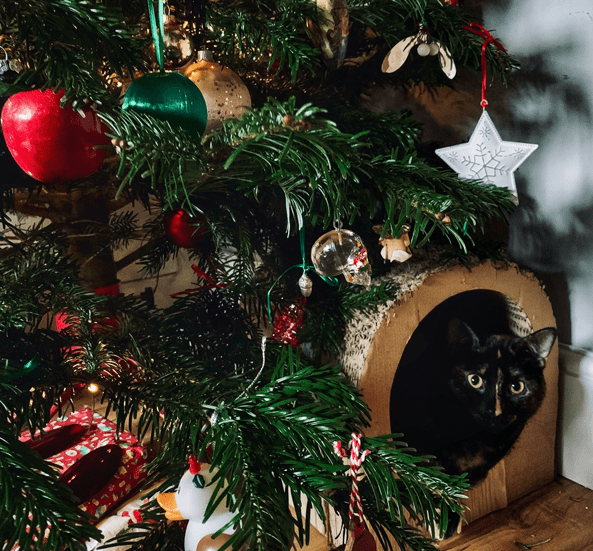
Please remember that pets are for life and not just for Christmas. Having a pet is a great responsibility. If you are considering a new dog, cat, small mammal or bird, then please do your research and remember it is a long-term commitment. Please read our previous blog on ‘Getting a pet responsibly’ for more advice.
The Netherlands was the first country in the world to ban ownership of pets with bodily characteristics or features that are harmful, including flat faced companion animal breeds. In this blog post we’ll explore the reasons why.

Vets around Europe and globally are highlighting a lack of awareness amongst pet parents about the health impacts for animals that are bred for a specific look. Some features such as a flat nose, a sloping back, bulging or droopy eyes, skin folds, or a round skull can be so extreme that they actually cause (sometimes extreme!) pain and suffering for our furry friends.
To give a concrete example of popular breeds: the flat faces and stocky build of dogs such as the pug and the French and English bulldog cause a range of serious disorders. Most of these dogs are chronically out of breath and are even more susceptible to heat strokes than the average dog breed. Their ‘snoring’ which some may find cute or funny is exactly the opposite – they are struggling to breath!
The flattening of the muzzle which gives the flat-faced look is generally associated with a longer soft palate, covering the glottis, and causing massive respiratory distress. The nostrils are usually narrowed (stenotic) which decreases air flow into the network within the nasal passage (nasal turbinates). This network is meant to help with temperature regulation, humidifying the air before it passes to the lungs and in flat-faced pets these are already smaller than in mesocephalic breeds. As a consequence, these dogs usually have decreased capacity for exercise and much less tolerance to high temperatures.
Other harmful features include the nose fold, which is typical to these breeds and causes skin and eye infections.
And when it comes to cats, those with folded ears, typically the Scottish fold, look like that because they have a genetic cartilage disorder that also causes painful joints and joint diseases.
Factors like these can cause dogs, cats and even rabbits, to live uncomfortable but also unhealthy lives, full of health emergencies and veterinary interventions. Leading to higher veterinary costs and a shorter lifespan.
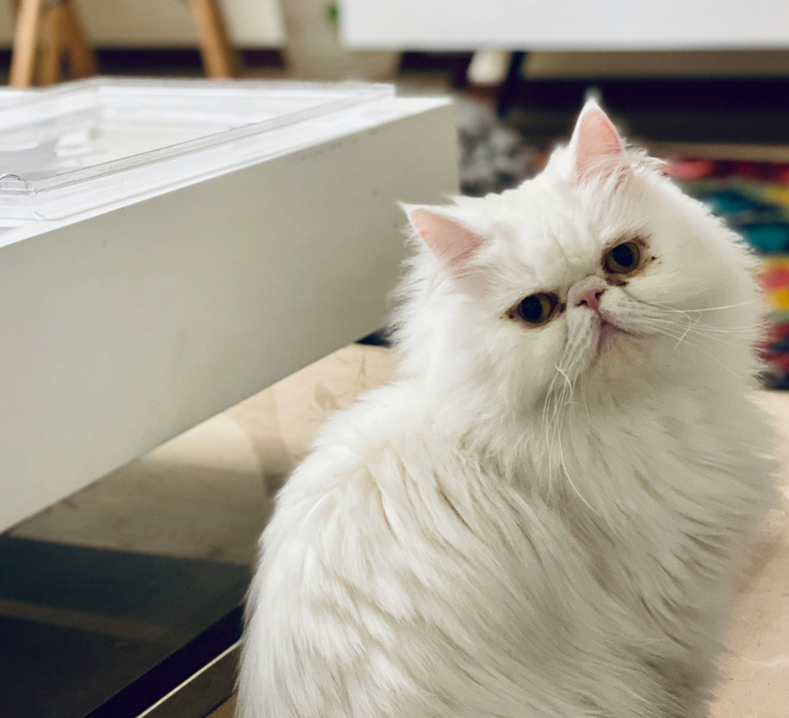
We want our pets to live a healthy and happy life, so we must not overlook the fact that prioritising looks over health makes having a happy life more difficult. Pets are about so much more than just their looks. They are a part of our families! And just like any family member, we want them to be healthy and be able to live comfortable lives.
If you are considering buying or adopting a pet, make sure you research the common health issues associated with the breed or talk to a veterinarian you trust. When buying from a breeder, always request the animal’s health history and ask about the parents, including breed specific data. Don’t forget to check also that the animal is registered and has their ID chip.
Making a conscious choice will help you share a unique long-lived bond with your fur baby!
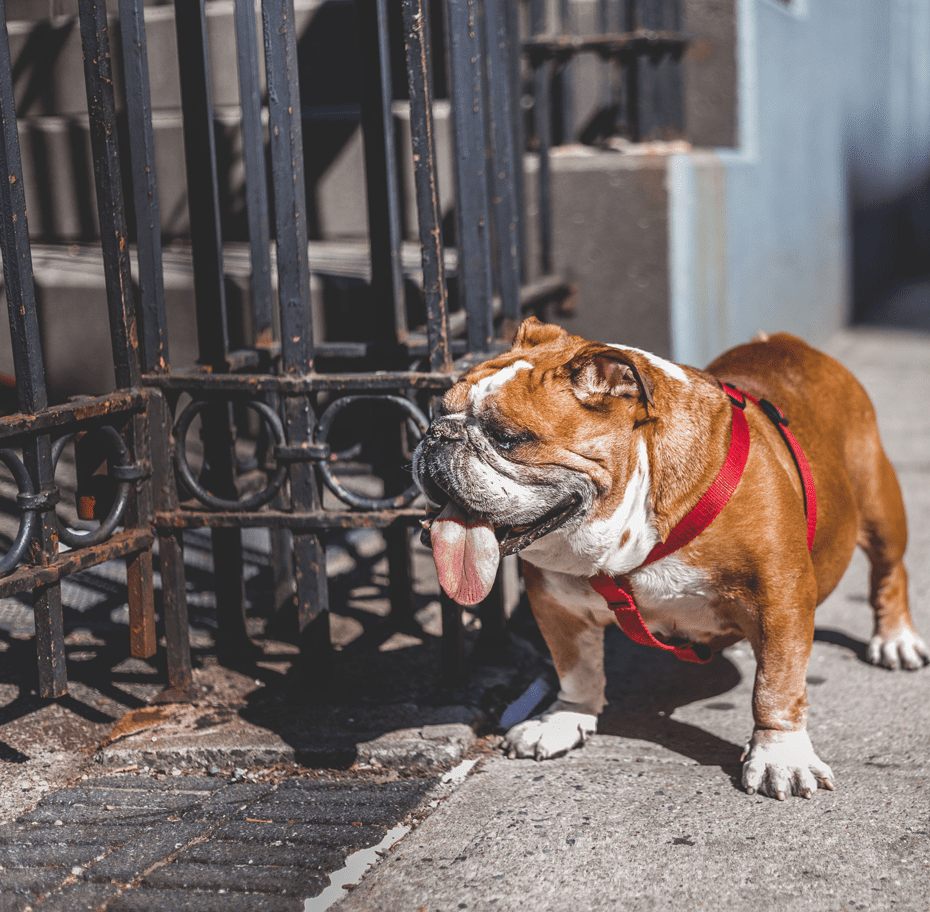
Are You Ready to Embrace Equine Responsibility?
Taking the reins as a horse owner is a thrilling adventure, but it’s essential to recognize that this journey comes with a range of responsibilities that are similar to those of a dog or cat parent. Before welcoming a horse into your life, it’s crucial to delve into the world of equine care and understand the unique needs these majestic creatures possess. With careful consideration and preparedness, you can ensure that you embark on this journey equipped to provide your equine companion with the time, care and attention they truly deserve.
The Economics of Equine Companionship
The economic facets of horse ownership are as significant as the emotional ones. From the moment you decide to become a horse owner, you’ll find yourself navigating through a series of financial commitments that go far beyond the initial purchase (that is likely to be minimal compared to the costs that will follow).
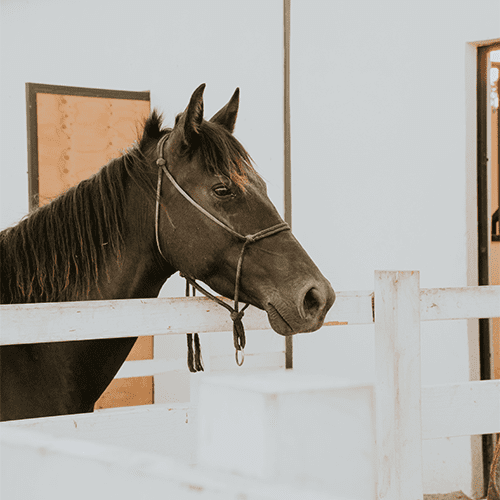
Just as a dog requires sustenance, horses (in a much larger scale) demand a steady supply of nutritious food, quality hay, and potentially specialised supplements. On top of that, the pre-purchasing exam, boarding and registration fees, public liability insurance, routine veterinary check-ups, unexpected medical emergencies, regular hoof care, stable renting or maintenance, and training expenses, all factor into the financial equation.
Crafting a comprehensive budget that encompasses all potential expenses, as well as a reserve fund for emergencies and health insurance is key. A solid financial plan ensures that your horse’s well-being is never compromised. According to FEI, horse ownership costs can run from €3,500 to €10,000 annually.

Choosing your horse
Horses, different breeds in particular, come with distinct behaviours, personalities, and requirements. Engaging in comprehensive research about horses is paramount prior to purchase. With prior knowledge acquired you can select a horse whose temperament aligns harmoniously with your lifestyle, daily routine, level of experience, expectations, etc. Remember, a well-matched partnership ensures both you and your horse thrive together!
Ensuring Equine Welfare
Making sure to cover all of the five freedoms is just as important for horse as for any other animal.
Freedom from disease, injury, and pain:
- Before purchasing a horse, make sure you get a pre-purchasing exam.
- Choose an equine vet to establish an individual health plan for your horse, including: regular veterinary visits, vaccination, parasite control, teeth floating and strategies to prevent diseases and injuries.
- As with their teeth, hooves continue to grow throughout their lifetime, meaning farrier appointments are essential to maintaining optimal health.
Freedom from hunger and thirst:
- Ensure an appropriate and well-balanced diet, including forage, feed and supplements when needed.
- Access to clean and fresh water are not only essential for welfare but can also help to prevent colic (one of the most recurrent diseases in horses).
- Please make sure you know exactly what is safe and what is not safe to give to a horse.
Freedom from discomfort:
- Provide clean and comfortable bedding, with minimal dust (to prevent respiratory diseases).
- Keep in mind that horses tolerate the cold much better than heat and humidity. Ensuring unlimited fresh water, minerals, shade, and shelter is recommended.
Freedom from fear and distress:
- Horses are extremely strong and sensitive creatures, more so than any other species. Appropriate training of those caring for the horse is essential.
- Encourage the human-animal bond through simple practices like grooming sessions.
- Stabled horses can acquire obsessive behaviours such as weaving, headshaking and pawing. You can help prevent this by providing adequate enrichment, like food balls, music, hidden food, toys, etc.
- If you can, take the time to train your horse ahead of interventions such as transport and veterinary care. This will make such interventions much less stressful for your horse, and can prevent them, you, and any other handlers from getting injured.
Freedom to express normal behaviour:
- Just as pets need regular exercise and playtime, horses thrive when provided with ample opportunities for physical activity and environmental enrichment.
- Ideally, your horse should be allowed plenty of time on grass.
- Horses should have contact, at least visual, with other animals. Horses generally love dogs and goats.
Avoid humanising your horse, let him be a horse, get dirty, run, play, etc.

In Conclusion
Taking on the role of a horse owner is an awe-inspiring commitment that requires dedication, resources, and a genuine passion for these incredible animals. By approaching equine care with a high sense of responsibility you’re poised to embark on a journey of companionship, growth, and mutual enrichment that transcends the ordinary. So, saddle up and embrace the path of responsible horse care – a journey that promises endless rewards for both you and your equine friend.
Owning a horse is very different from owning a donkey. You can find more information here on donkeys.
Other useful resources
FearFree
World horse welfare
- https://storage.googleapis.com/worldhorsewelfare-cloud/2019/10/d9b91484-keeping-your-horse-healthy-pack.pdf
- https://storage.googleapis.com/worldhorsewelfare-cloud/2019/10/ea8e42e0-equine-health-checklist.pdf
- https://www.worldhorsewelfare.org/advice/health/disease-prevention
British horse society
- https://www.bhs.org.uk/horse-care-and-welfare/ownership-loaning/buying-a-horse/
- https://www.bhs.org.uk/horse-care-and-welfare/health-care-management/horse-health/fat-scoring/
- https://storage.googleapis.com/worldhorsewelfare-cloud/2019/10/d9b91484-keeping-your-horse-healthy-pack.pdf
- https://storage.googleapis.com/worldhorsewelfare-cloud/2019/10/ea8e42e0-equine-health-checklist.pdfhttps://www.bhs.org.uk/horse-care-and-welfare/behaviour/stereotypical-behaviours/
Just like us, staying hydrated is essential to keep your fur-baby’s health and well-being. It’s even more important during hot summer months.
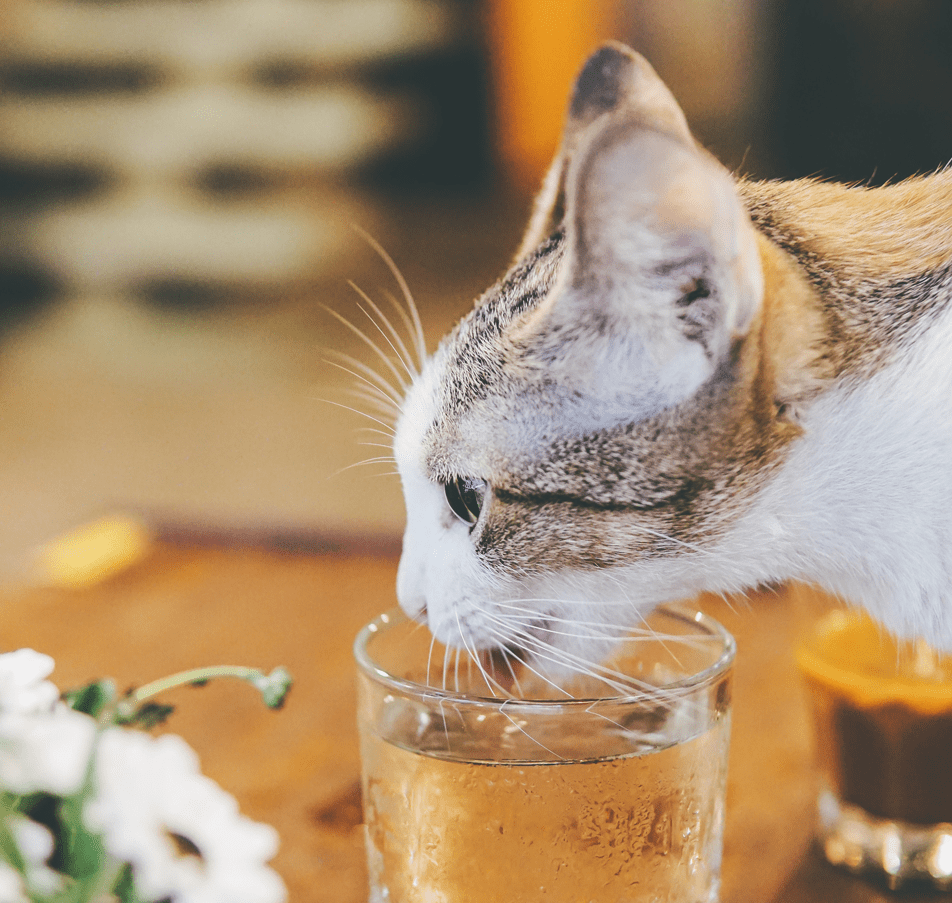
Keep an eye on water levels
It can be hard to know exactly how much water your pet is drinking, paying attention to how much has gone each time you refill their bowls can help. It can harder for cat parents, so you will need to be extra vigilant to see if they’re drinking enough.
All pets need more water during the hotter months of the year. So remember to always bring water with you when you take your dog for a walk, leave an extra bowl in your rabbit’s hutch and if your cat likes to venture outside, make sure to leave a bowl in your garden or on your terrace.
It’s also important to be mindful of the activity levels or your four-legged friends. Really active pets will drink more water than calmer pets and may need more water available.
Keeping your pet hydrated in hot days
- Have multiple water bowls of fresh water around the house to give your furry friend plenty opportunities to stay hydrated
- Some animals, particularly cats, prefer to drink running water, so automatic water fountains can stimulate them drink a bit more.
- Make them frozen treats! Ice cubes or frozen treats not only help keep them hydrated but also cool them down, great for really hot days.
- Consider wet food or add a little bit of water to their dry food. Including water in their meals or treats will also increase their daily intake and help keep them hydrated throughout the day.
- Giving you pet rabbits fresh vegetables that are rich in water also does the trick. But remember, only 15% of their daily food should be vegetables.
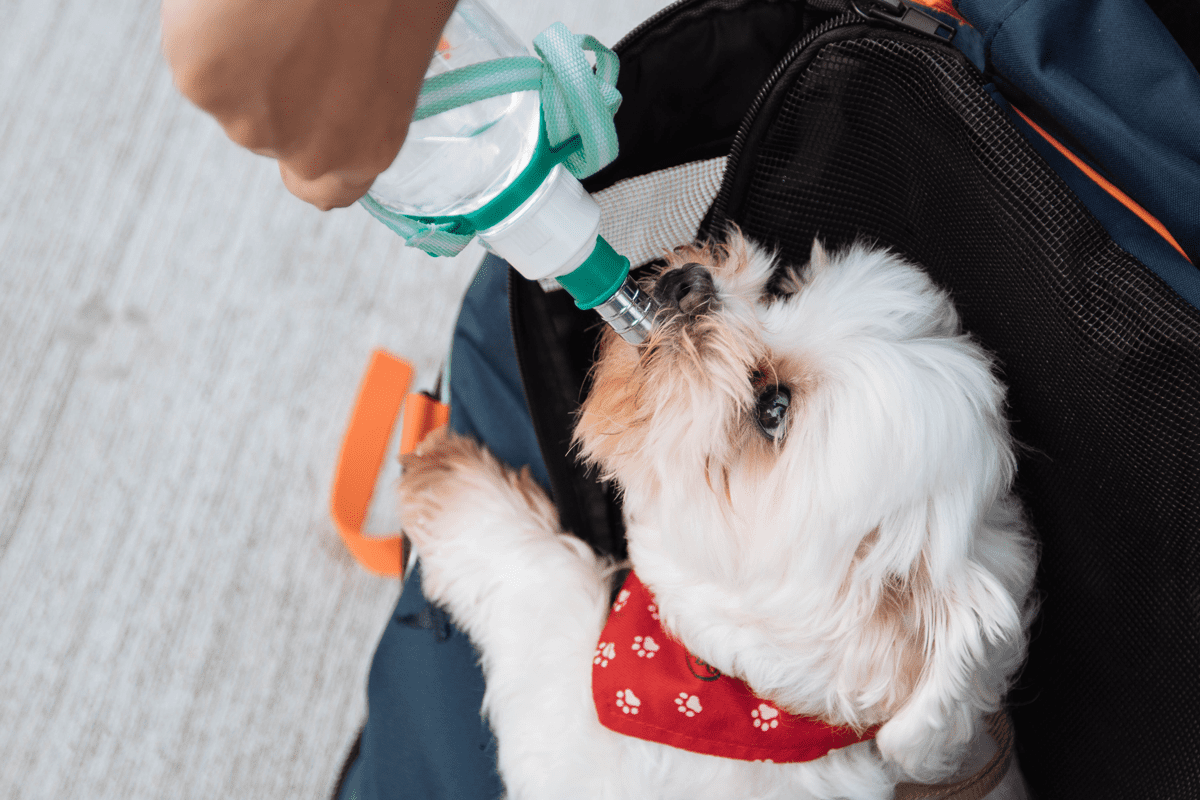
Watch out for these signs of dehydration
- Vomiting and/or diarrhoea
- Loss of energy
- Excessive, ongoing panting
- Loss of appetite
- Sunken, dry eyes
- Dry, sticky gums
- Loss of skin elasticity
- Urinating less frequently
If you have any concerns or worries always contact your vet for advice.

Caring for pets during the summer months requires special attention to ensure their wellbeing and comfort. Hot weather can bring challenges and risks for our furry friends. Here are some essential tips to help you care for your pets over the hot Summer months:
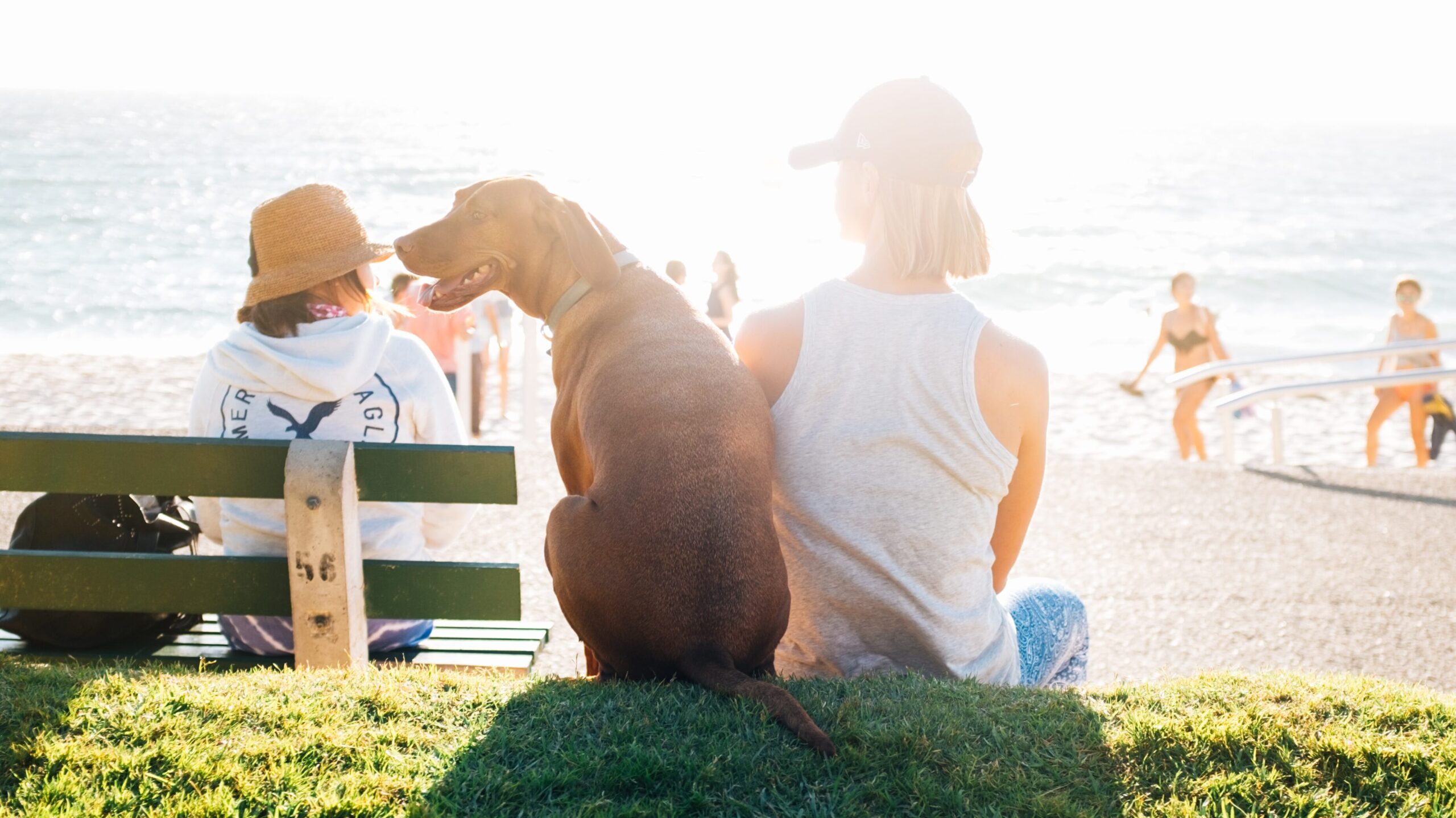
Hydration is Key:
Just like their owners, it is important to stay hydrated in the Summer heat. Pets must have access to clean, fresh water at all times. One tip is to leave multiple bowls of water around your home.
Avoid Over-heating:
Some pets find it hard to regulate their body temperature and keep cool. It’s important to keep them in calm and comfortable surroundings. Also, limit your pets’ outdoor activities during the hottest parts of the day. If you have a dog, choose cooler times of the day such as early mornings or late evenings for walks.
Provide Shade:
Ensure your pets have access to shaded areas both indoors and outdoors. You can use fans or air conditioning to create a comfortable environment. Cooling mats or damp towels can also help.
Never Leave Pets in Parked Cars:
Many holidaymakers drive long journeys for their Summer holidays. However, at home or away, never leave a pet unattended in a parked car as it can be extremely dangerous in the Summer heat.
Avoid Hot Surfaces
Remember that pet’s paws can burn on hot surfaces. If you walk your dog in the cooler parts of the day, this may not be a problem. However, the grass in your garden can also heat up and burn your pet’s paws so take care.
Watch for Heatstroke:
If you suspect your pet has heatstroke, move them somewhere cool, provide water and consult your vet with any concerns.
Watch out for Fleas, ticks, and mosquitoes:
Parasites are more prevalent during the summer months. Make sure your pets are protected with the appropriate flea and tick treatments. Small mammals such as Guinea Pigs can suffer from infestations in the heat, so do take care and consult your vet for any advice or treatment.
Plan your holiday pet care:
If you are planning a Summer holiday, make sure you have appropriate pet care sorted. Make sure your sitter is briefed on your pet’s usual routine, pet food and vet’s contact details.
Research if travelling with your pet:
If you are travelling abroad, you need to do some research as requirements will depend on destination. Always consult your vet and it is likely there will be paperwork and possibly quarantine requirements. Ensure that your insurance covers your pet’s holiday and locate the nearest veterinary practice. If you are staying closer to home, do your best to stick to your pet’s usual routine to make them feel as comfortable as possible.
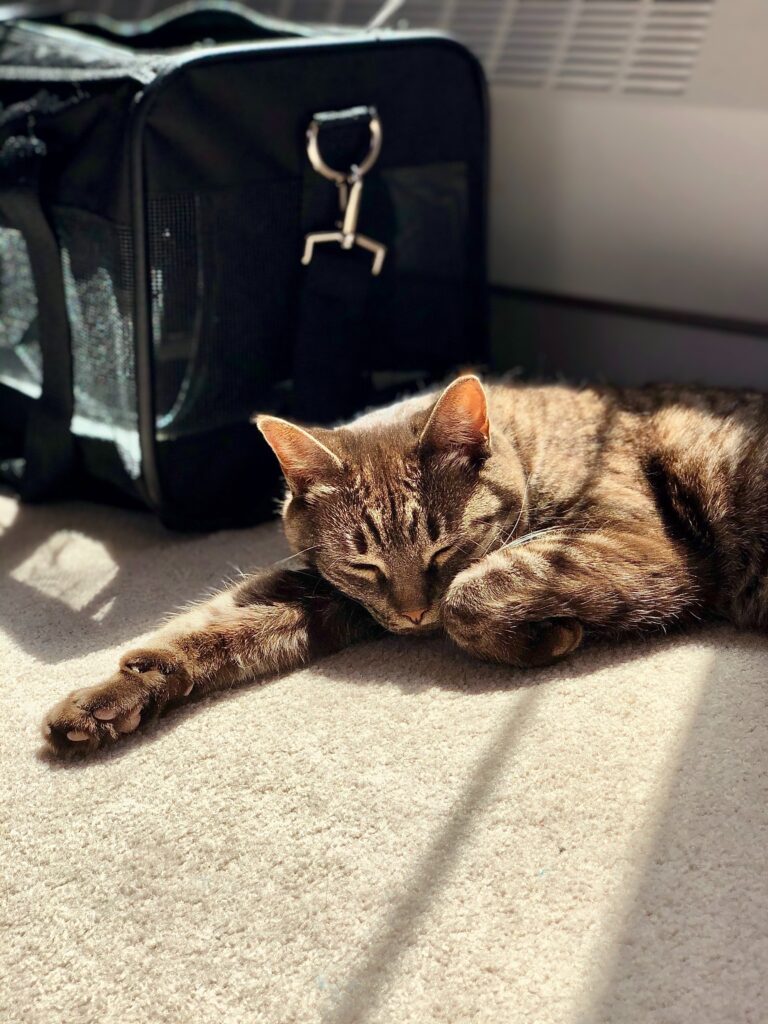
Monitor your pet’s appetite:
Your pet’s appetite may be affected by the Summer heat and any changes to routine can make them anxious resulting in a reduced appetite. You can help your pet by ensuring it’s routine is as normal as possible and by providing a cool environment for feeding time. You may need to provide smaller and more frequent meals although take care it doesn’t spoil in the heat. Staying hydrated is always important too.
By following these tips, you can help your pets stay healthy, happy, and safe through the Summer season.
World Immunization Week runs from 24-30 April, and on 20 April each year there’s a special awareness day for World Animal Vaccination Day, so it’s quite fitting that we’ll be covering vaccines in this month’s post. Every responsible pet owner knows that it is important to keep your pet’s vaccine schedule up to date. But what a lot of people don’t know is that by vaccinating their pets, they are also protecting their families!
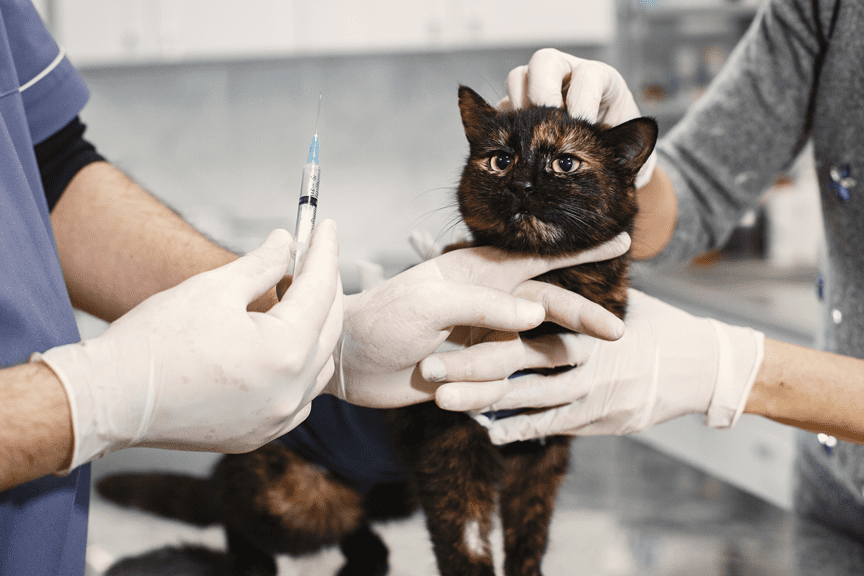
Why we vaccinate
By boosting the immune system, vaccination prevents serious diseases that can cause a lot of suffering for animals and even be fatal. If you pet happens to catch a disease they’ve been vaccinated for, they usually suffer much milder symptoms and have a higher chance of surviving the more serious illnesses. Today in Europe, Vets report rarely seeing certain diseases that used to be very common, and still remain a threat elsewhere around the world – all thanks to having vaccines available and pet parents smart enough to follow vet advice. It is really important to follow the vaccination schedule recommended by your vet to avoid the possibility of a gap in your furry-friend’s protection.
But did you know that not only cats and dogs can get vaccinated? There are vaccines available for rabbits, ferrets and even some pet bird species!
Vaccines matter from an early age
Vaccinating young pets is extremely important for their welfare, as they help to make sure they’ll grow up healthy and aren’t at risk of certain diseases when they’re vulnerable. Since their immune systems aren’t fully developed until around 6 months old, they are particularly susceptible to diseases during the first few months of their lives. This is valid for not only puppies and kittens but also for all fur babies. Ask your vet if you have any questions on how to care for your pet in the early stages of life.
For more information on pet health care, check our Pillars of Pet Care Page.
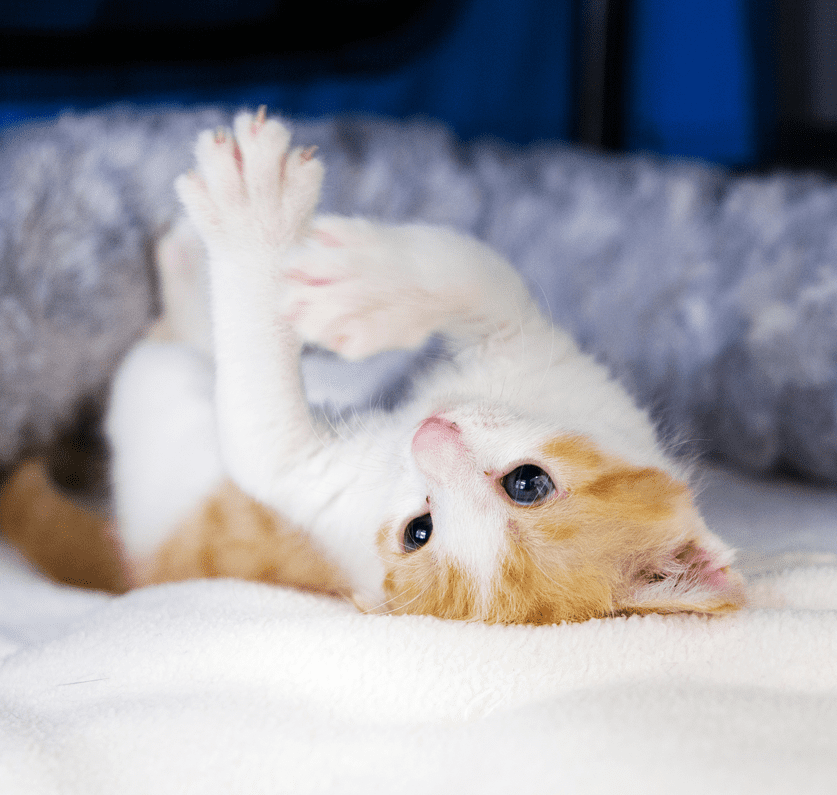
January is ‘walk your dog month’ and at Pet Alliance Europe we thought it would be a good idea to remind our readers of the huge advantages associated with getting out and about with a pet. There are obvious benefits for your physical health but also for your mental health. Hanging out with pets keeps your body – and your brain – active!
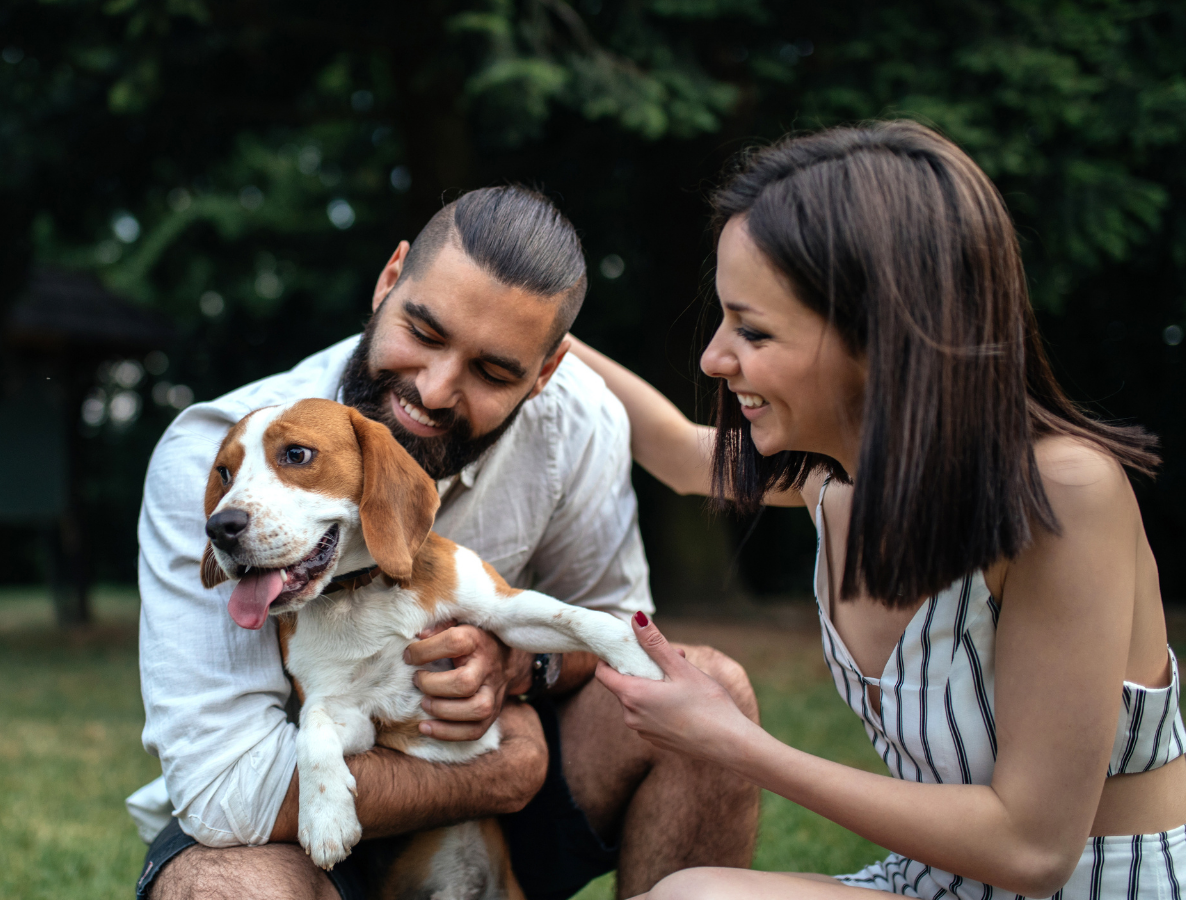
Exercising with pets benefits our health
It’s well documented that dog owners enjoy the health benefits of more frequent walking than those without a dog. The odds of dog owners meeting physical activity recommendations are four times greater than for non-dog owners. Older dog owners benefit from an additional and significant 22 minutes per day.
The specific health gains of this additional exercise vary from owner to owner. However, we know there are well-reported cardiovascular benefits. A survey of almost 11,000 people in the US linked pet ownership (especially dogs) to increased physical activity and improved outcomes after major cardiovascular events. Another massive study of 3.4 million people in Sweden found that dog ownership had a dramatic effect on people who live alone, cutting the risk of death from cardiovascular disease by 36%. In households with more people, the presence of a dog was still linked to lowered deaths from heart disease (15%).
The routine of getting outside for fresh air also has a positive impact on your mental health. Physical activity releases endorphins in the brain that energise you and create positive feelings. It reduces stress, boosts your mood, and increases mental energy. When you add in the companionship of a playful dog, it’s even better!
The company of a dog on walks has been shown to boost social interaction and confidence. One study among 80 adult strangers showed that the presence of a dog encouraged friendly behaviour when the pet owner asked for help.
All kinds of pet interactions count
However, the rewards of pet interaction are not limited to dog walking. Spending time playing with your cat or hamster, watching fish in an aquarium or wild birds feeding – have all been linked to improved mental health. Studies show that pets in general make us feel more relaxed, reducing depression and loneliness. To read more about the health benefits, see our booklet, which summarises huge amounts of research in this area.
Pets need exercise too
Having talked about your physical and mental health, we should also remember how important it is for your pets to get the right amount of exercise. Research among vets suggests that obesity is a big problem with 51% of dogs, 44% of cats and 29% of small mammals classed as overweight or obese.

Overfeeding, unsuitable table scraps and insufficient exercise are the major causes of overweight pets. In the same way that excess weight can cause us additional problems, pets can suffer too. Pet obesity can contribute to health issues such as arthritis, heart disease and cancer. Sadly, it can also shorten their lifespan.
Exercise is important to keep your pet content and to strengthen the bond between the owner and the pet too. Whatever activity you choose to practice with your pet, remember that the type and amount of exercise should be tailored according to the individual pet.
This year, we hope that as many of you as possible can get out and about – or invest more time interacting – with your pets. In addition to boosting your physical and mental health, it will keep your pets stay healthy and happy too.
